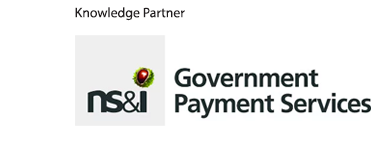Expanding the comfort zone: GDS chief Kevin Cunnington on promoting innovation

The UK’s Government Digital Service, long a tech pioneer, has turned its attention to promoting innovation. Director general Kevin Cunnington tells Matt Ross how he intends to help civil servants overcome the ‘blockers’ and get comfortable with the novel and the experimental
Kevin Cunnington is on a mission to promote innovation across the UK civil service. In particular, he wants to help tackle the “number one blocker of innovation” – the need to “give our colleagues a better understanding of what good innovation looks like” – through education and training. But that is, he explains, just the beginning.
As Director General of the Government Digital Service (GDS), Cunnington is trying to position GDS as more than a digital hub for government: with Cabinet Office minister Oliver Dowden, he’s recasting the unit as a champion of innovative approaches, tools and people throughout the civil service.
Last year, he explains, GDS produced a “landscape review of innovation across government”, examining the use of emerging technologies such as artificial intelligence (AI), virtual reality and distributed ledgers. This was followed by a review of AI’s applications across Whitehall, and the development of an “innovation strategy” examining “not just the technologies, but how we change government processes to make innovation easier” – with the latter due for publication in spring 2019.
Catalysing innovation
Meanwhile, GDS has launched a number of initiatives – including the GovTech Catalyst, a £20m (US$25m) scheme to help departments adopt new technologies. So, for example, “the Home Office came to us and said: ‘We’d like some help spotting terrorist-related videos and images on the web, can you help?’,” Cunnington recalls. “We work with departments to formulate the request, put it out to the market, and bring in some suppliers who can help.”
The Catalyst’s procurement process, he adds, has been built to foster innovation and encourage bids from tiny suppliers – tackling the civil service’s innate tendency to buy “services we’re assured about from suppliers who’ve done it before.” Reviewing the applications, GDS typically selects “about five very small companies to do prototypes, and then we pick one of those to go forward – so inherent in the model is this failure rate that allows us to experiment.”
On the whole, though, Cunnington isn’t as fierce a champion of SMEs as previous GDS chiefs – who energetically led government’s shift away from dependence on the big ‘system integrators’ and IT consultancies. “Personally, I don’t particularly have a problem with the civil service using large IT suppliers,” he says. “We’ve done an awful lot to make sure that we’re not as dependent on a small number [of suppliers].”
Government, he argues, should be an “intelligent buyer of services, right from micro firms when we’re talking about innovation, through SMEs on the digital marketplace, to bigger suppliers. I think you just mix and match what you need, finding the right skills and resources.”
Analogue innovation
But innovation, as Cunnington acknowledges, is about a lot more than whizzy tech. “The innovation strategy will definitely not all be about lovely technologies: it’ll be much more about how we build government capability, removing some of the blockers so that government can be more innovative,” he says.

For example, the Treasury’s ‘Green Book’ guidelines on producing business models require departments to set out exactly how a programme will be delivered – penalising the incremental, experimental approach that favours true innovation. “It’s perfectly well-suited to large infrastructure programmes, but it’s quite a straightjacket for ‘Agile’ transformation programmes,” comments Cunnington. “Part of the work we’re doing is with the Treasury on the Green Book, to say: how can we make it inherently a bit more flexible, so people feel more comfortable revising their estimates as they go forward?”
But Cunnington’s main focus in this field is on making civil servants more comfortable with innovative approaches and technologies. So GDS runs five-day foundation courses in AI and machine learning, plus “master classes for more senior leaders, so they’re not scared of talking about machine learning or quantum computing.” And its eight “academies” have so far trained some 10,000 civil servants, “helping people to be less nervous about transitioning from an established [project management] methodology like Waterfall to something that has been less established, like Agile.”
Training in digital technologies has also been embedded in management training across government, he adds, and GDS runs quarterly Transforming Together conferences aimed “not just at digital people, but heads of project management, heads of policy for the big departments.” Over time, he believes, the combination of training and events is making an impact: “Over the last few years, I’ve seen quite a big shift in the awareness of permanent secretaries, director generals and senior managers around the capabilities of digital.”
International exchange
Learning from overseas is another crucial component of the drive to improve senior leaders’ approach to innovation. GDS has received visitors from about 180 countries over the last couple of years, he says, and runs “pop-up academies in places like Canada.”
Cunnington will also be speaking at Global Government Forum’s Innovation 2019 conference: held in London on 28 February, the international event – organised with the Cabinet Office, and free to all public servants – will see speakers from countries including Estonia, Germany, Canada, Singapore and the USA mingling with UK officials. “The value of having an international community, to us, is huge,” he comments. “We can get to see what other people are doing, which of the precedents work, and what hasn’t worked so well.”
Sharing staff and expertise with the private sector is just as valuable – and Cunnington has worked hard both to strengthen the civil service’s recruitment offer in the competitive tech jobs market, and to bolster the kind of workforce diversity that itself strengthens innovation.
Breaking down government’s tech jobs into 38 defined roles with associated pay scales, Cunnington has – in his role as head of the civil service’s ‘digital, data and technology’ profession – aligned salaries “to the market; so we’re never going to pay as much as an investment bank, but we can pay something that is consistent and maps to grade and competency.”
Cultural exchange
On diversity, 44% of GDS staff and over half of the management team are women – the tech industry average is 19% – whilst 33% are ethnic minority, against 11% across the civil service. But Cunnington acknowledges the need to boost the proportion of ethnic minority staff amongst GDS managers, where the figure is about 4% – broadly level with the cross-government senior civil service average.
Requiring interview panels to include a woman was important to GDS’s success on gender equality, he says; introducing a similar rule for ethnic minorities helped lift their representation from 18% to a third. Now the challenge is to support people into senior grades, using schemes such as GDS’s Breaking Down Barriers events and “reverse mentoring” – in which leaders are advised by junior ethnic minority staff on how to handle sensitive racial and cultural issues. “Most people still don’t feel comfortable talking about race in the work environment,” Cunnington says; having been ‘reverse mentored’ himself, he adds, “I feel a bit more confident about these things”.
Data exchange
And there’s another form of exchange that’s key to innovation in government: the sharing of data across departments. This process has been eased by the EU’s GDPR data regulations and the UK’s Digital Economy Act, Cunnington explains: these improve transparency, confidence around data-sharing, and recording of data’s provenance and permitted uses.

GDS’s Verify identity verification programme is also key here, enabling participating departments to reconcile disparate data on particular individuals. The scheme, Cunnington explains, aims to provide a single log-in through which citizens can access services across government. To generate economies of scale and maximise take-up, GDS decided to create the technology “in the economy” – inviting private companies to build their own systems to GDS standards. The intention is that providers offer Verify to businesses as well as departments, providing as tool that citizens can use to interact with both private and public sector bodies.
In the event, several key departments haven’t adopted the scheme – complaining privately that its level of identity verification didn’t meet their needs, and pointing to slow take-up rates and poor user experiences. “It’s quite complicated trying to build an identity service in the economy, through five outsourced providers, on the scale of a 60 million-person country,” comments Cunnington.
But he argues that October’s announcement ending public funding for the scheme – widely interpreted as a sign that the government was losing confidence – was always part of the plan. “In this final phase, we’re working very closely with the five providers to reduce the price down to something we think is a commodity price, but also to encourage and help them to build volume in the private sector,” he says. “It wasn’t that we changed our mind.” So far, he adds, three million citizens have signed up to the service – and once people are set up, they’re using it repeatedly.
Brexit again
Cunnington also resists the suggestion that the reforms to ‘Spend Controls’ – which required departmental IT projects to undergo a GDS audit before spending serious money – have weakened the system. Rather than passing through a GDS-managed gateway, programmes now undergo “continuous assessment” under GDS oversight; and in the first year after the changes, Cunnington says, the amount of public money saved rose from £339m ($428m) to £450m ($569m).
He does, however, acknowledge that the sheer number of Brexit-related IT programmes operating across Whitehall has required GDS to introduce a “separate process for EU exit to expedite control decisions, simply because we can recognise we’re going to have to operate at a different speed. That’s purely tactical, just to make sure we don’t get stuck on EU exit-related things.” In other words, the need to get Brexit programmes through the system means taking a lighter-touch approach to policing compliance with GDS design principles – a move forced on the digital unit by the sheer volume and tight timescales of Brexit schemes.
It is hard to imagine that this won’t hit design quality in some Brexit-related programmes; and as the Verify experience demonstrates, if digital services aren’t superbly user-friendly they can struggle to attract users. But the success of other GDS-managed digital services demonstrates that ‘Government as a Platform’ systems can find willing recruits among public bodies and service users alike: nearly 500 public bodies now use GDS’s Notify customer communications platform, half of them local authorities.
Prove it to persuade
It is through good design and reliable service, then, that GDS can overcome what Cunnington calls the “not invented here” problem: departments’ reluctance to adopt digital systems that they haven’t developed and don’t own. “At one point, maybe, that was a sound theoretical objection,” he comments: departmental chiefs are accountable to Parliament for how they spend money, and were reluctant to take responsibility for operations they didn’t control. But through 200 million customer communications, Notify has never had a significant “outage” – demonstrating, he says, that “there’s really not much to worry about. So I think in a practical sense, those objections have gone away by proving the point that it works.”
As civil servants contemplate GDS’s new focus on innovative techniques and the adoption of new technologies, many will again be cautious – hesitant in changing their approach to risk, and keenly aware that political and media attitudes lag far behind Cunnington’s. As with Notify, the GDS chief has only one sure-fire way of encouraging innovative practices across the civil service: proving that it works.
You can register to attend Innovation 2019 via our dedicated website: the event is in London on 28 February 2019, and free to all public servants.
Global Government Forum’s Five Thoughts for Better Government
Kevin Cunnington on learning from overseas
To help our readers get the best out of Global Government Forum, we ask interviewees five standard questions – four seeking practical advice and opinions, and one to reveal something a little more personal.























Given that industry demographics show that 80% of graduates in the computing and tech sectors are men and that ethnic minorities make up less than 20% of the UK population, do the following figures represent positive discrimination?
“On diversity, 44% of GDS staff and over half of the management team are women – the tech industry average is 19% – whilst 33% are ethnic minority”
My son who is completing a computing degree, is concerned that he will find it harder to find employment in this sector than his female and ethnic counterparts and is considering a change in career. If we want to provide equal opportunities, should the figures not be closer to the wider demographics ?